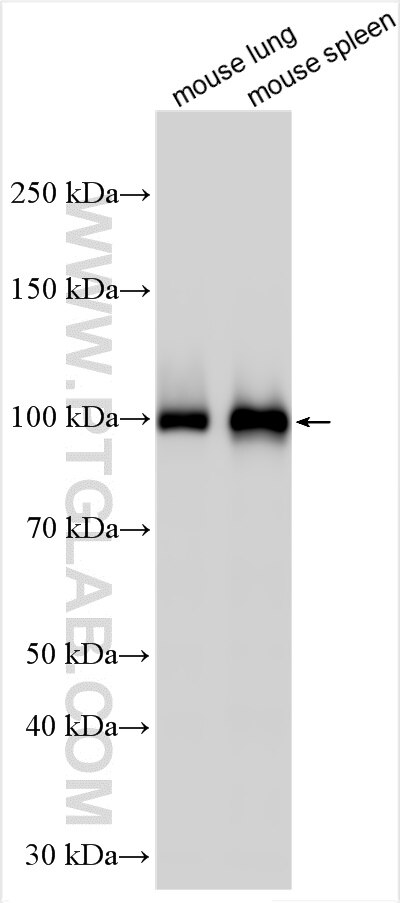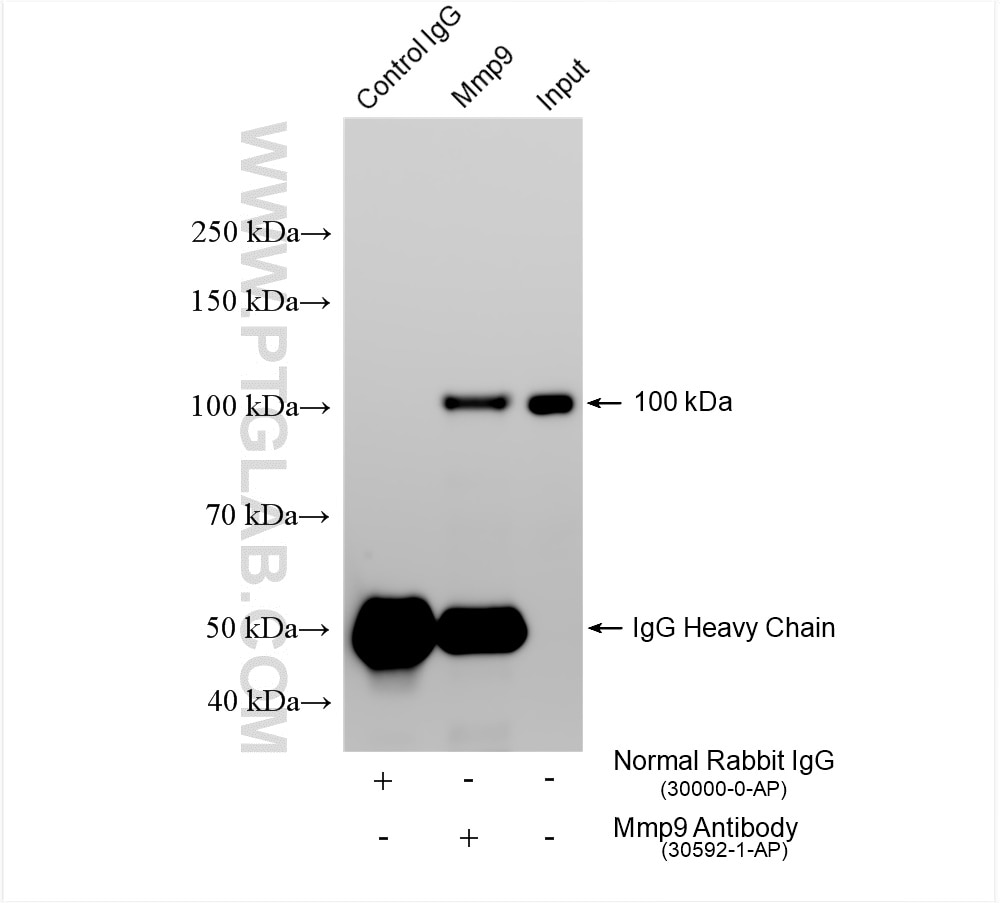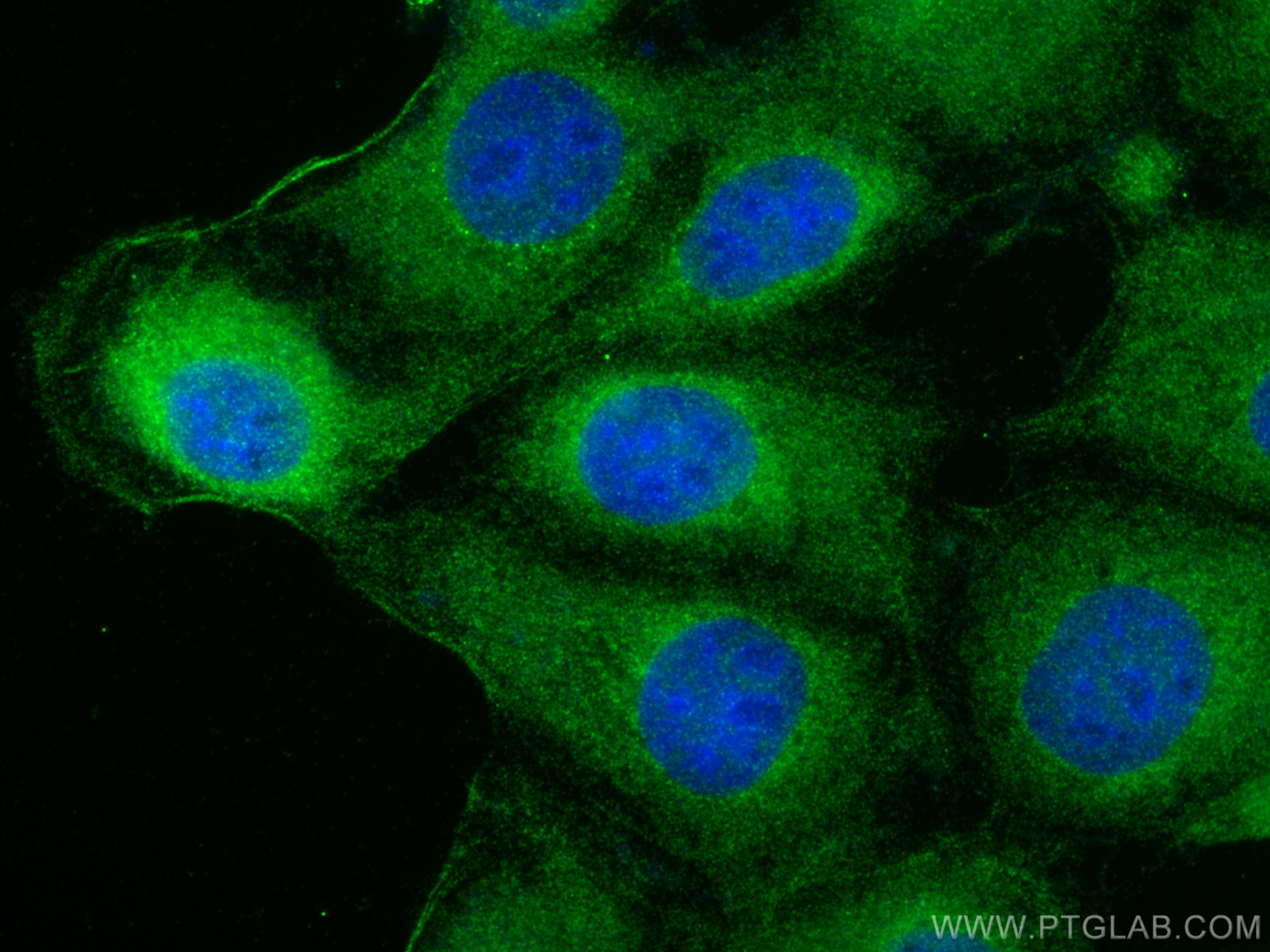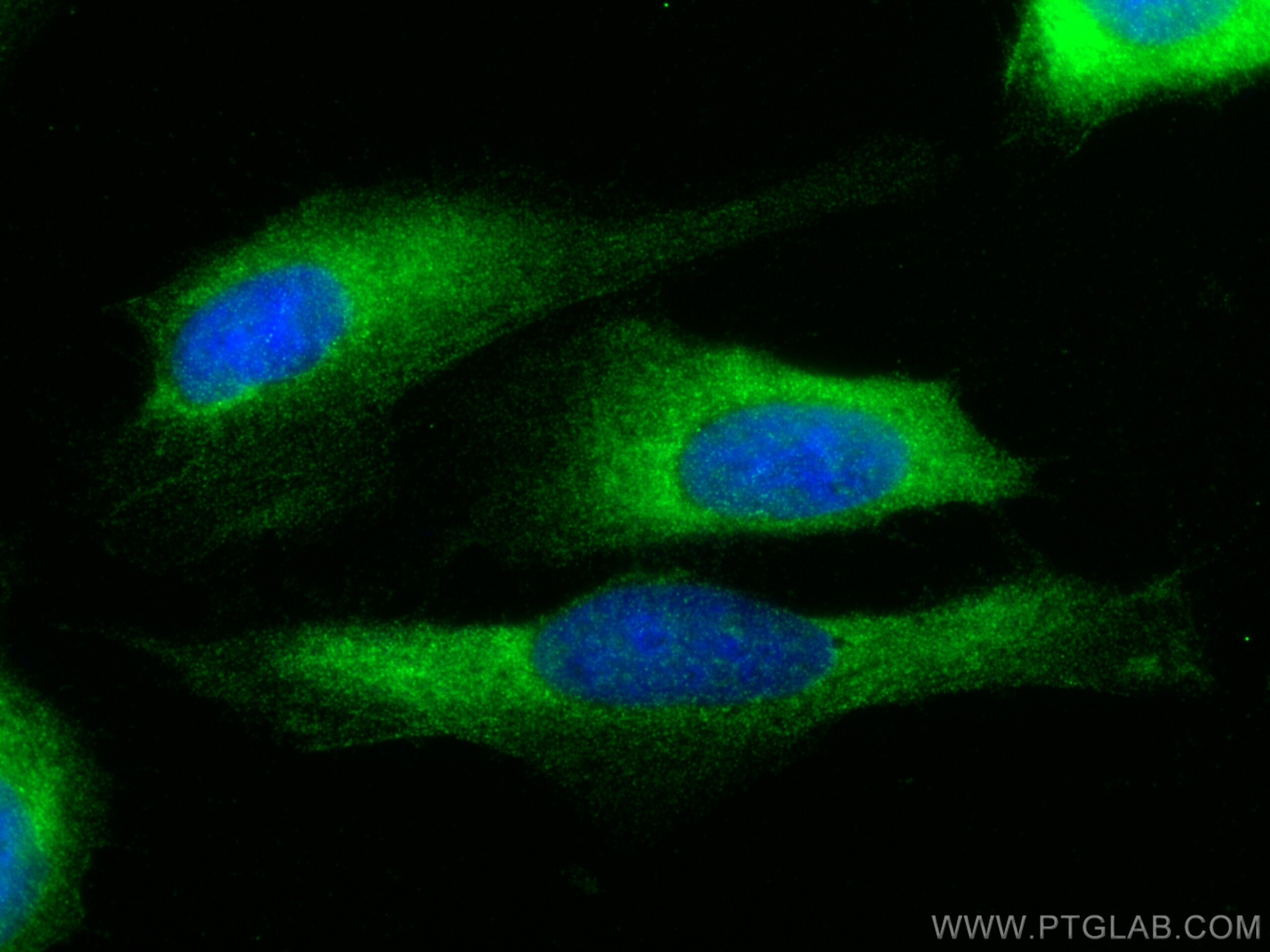Validation Data Gallery
Tested Applications
Recommended dilution
| Application | Dilution |
|---|---|
| It is recommended that this reagent should be titrated in each testing system to obtain optimal results. | |
Product Information
30592-1-PBS targets Mmp9 in WB, IF/ICC, IP, Indirect ELISA applications and shows reactivity with human, mouse samples.
| Tested Reactivity | human, mouse |
| Host / Isotype | Rabbit / IgG |
| Class | Polyclonal |
| Type | Antibody |
| Immunogen |
Recombinant protein 相同性解析による交差性が予測される生物種 |
| Full Name | matrix metallopeptidase 9 |
| Calculated molecular weight | 81kd |
| Observed molecular weight | 80-100 kDa |
| GenBank accession number | NM_013599 |
| Gene Symbol | Mmp9 |
| Gene ID (NCBI) | 17395 |
| Conjugate | Unconjugated |
| Form | |
| Form | Liquid |
| Purification Method | Antigen affinity purification |
| UNIPROT ID | P41245-1 |
| Storage Buffer | PBS only{{ptg:BufferTemp}}7.3 |
| Storage Conditions | Store at -80°C. |
Background Information
Mmp9 (matrix metallopeptidase 9), also known as Clg4b. It is expected to be located inextracellular matrix. Proteins of the matrix metalloproteinase (MMP) family are involved in the breakdown of extracellular matrix in normal physiological processes, such as embryonic development, reproduction, tissue remodeling, and disease processes, such as arthritis or metastasis. Studies in rhesus monkeys suggest that MMP9 is involved in IL-8-induced mobilization hematopoietic progenitor cells from bone marrow, and murine studies suggest a role in tumor-associated tissue remodeling. The calculated molecular weight of Mmp9 is 80 kDa, the pro-MMP9 is 92 kDa, and this protein can exist as a dimer of 180 kDa (PMID:7492685).



